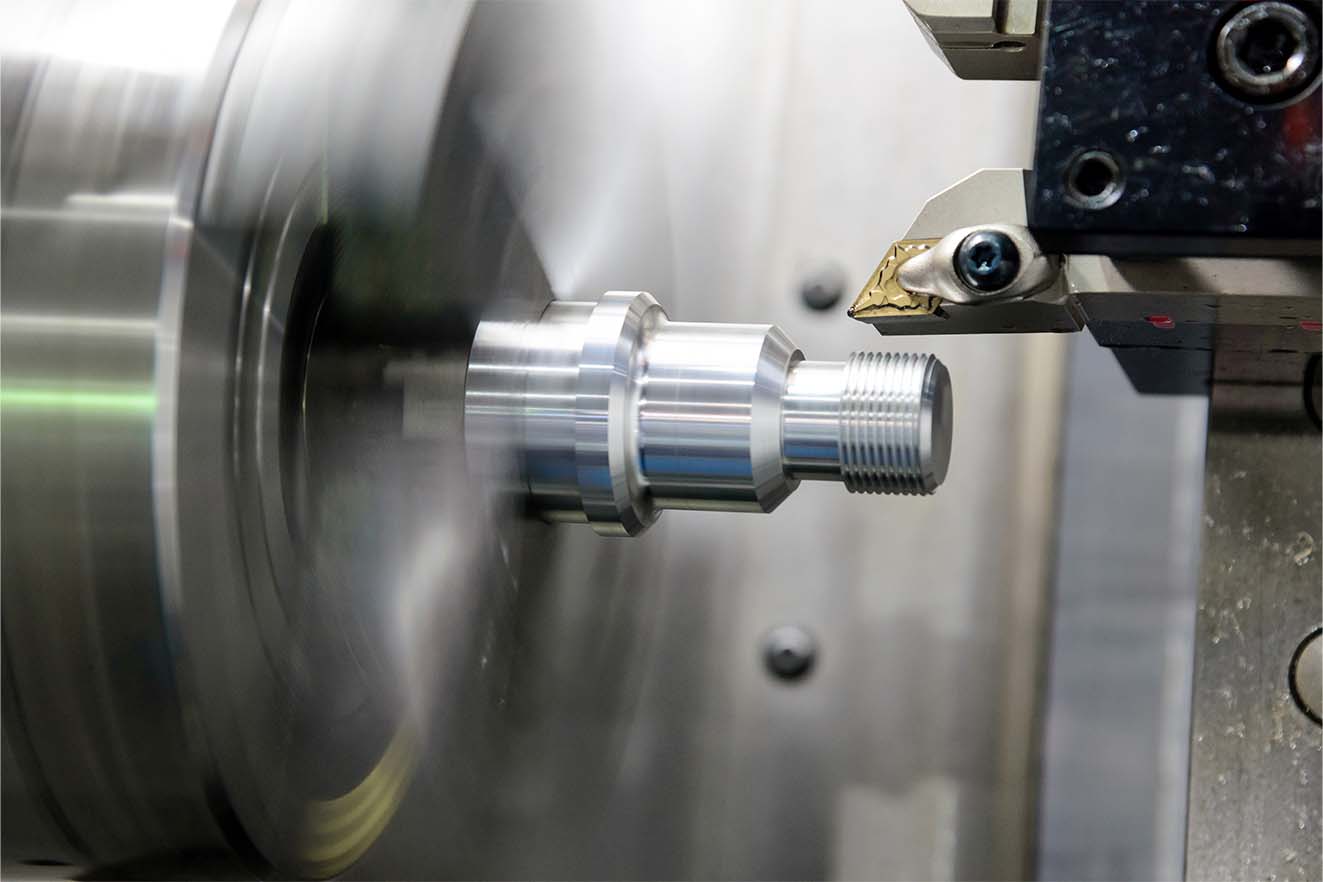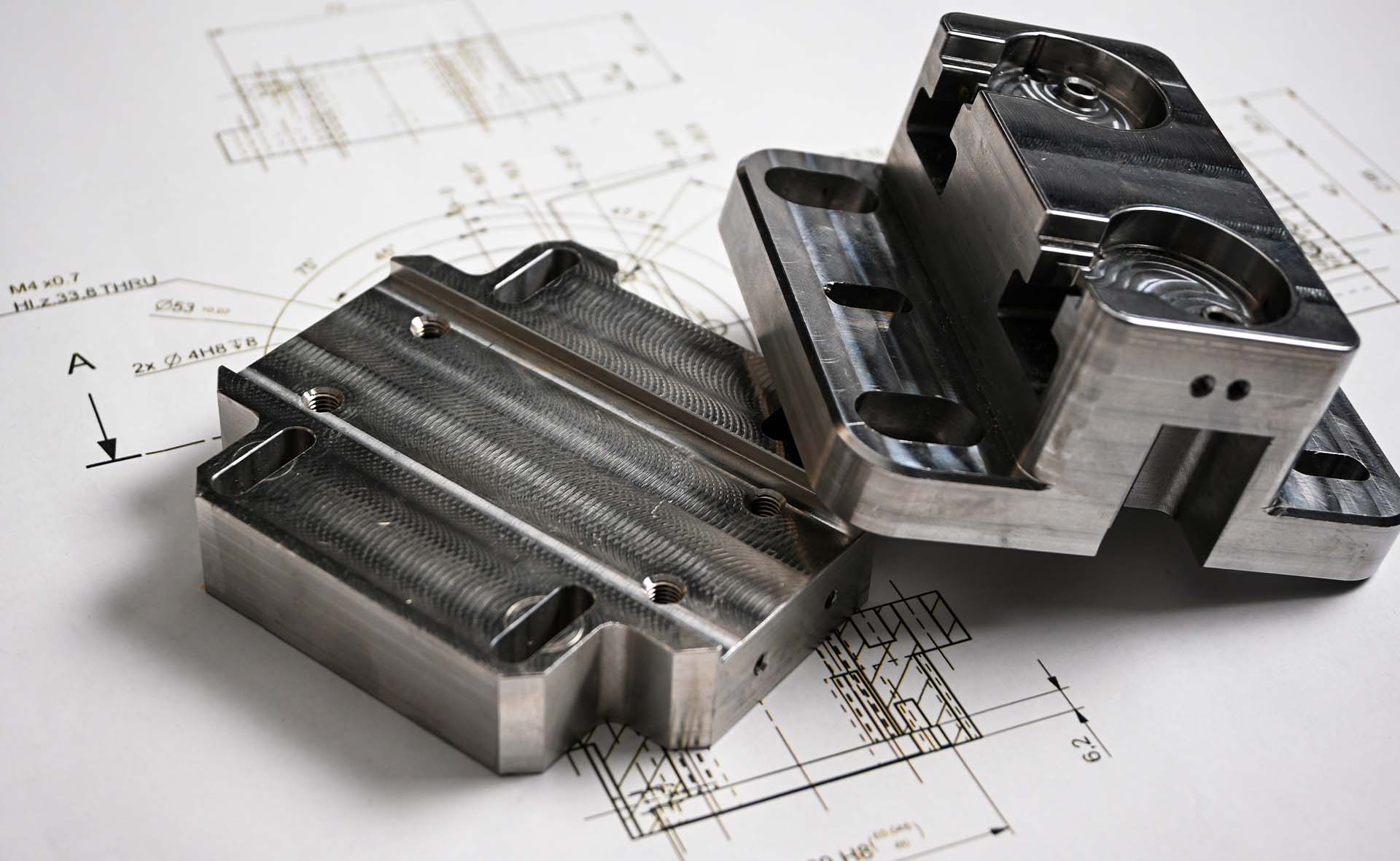Computer Numerical Control (CNC) turning is a subtractive manufacturing process where a bar of plastic or metal material is held in a ‘chuck’ and rotated on a spindle at high speed against a cutting tool moving in a linear motion, shaving material off to create the desired shape. As the name suggests, the cutting tools are programmed and managed by a computerized manufacturing process, leaving no room for human error. This process can also be repeated as many times as desired to achieve a production run of identical parts, as fast as 4 days here at HLH.

Example of CNC turned parts made at HLH Rapid
CNC turning is commonly used for cylindrical shaped parts, however, it can be used for square or hexagonal-shaped raw materials. Unlike the more commonly used CNC milling technique, turning uses one of the oldest styles and forms of manufacturing. This is because it works to the same principles as a ‘lathe,’ a tool that has been used by humans as far back as Ancient Egypt.
Turning is a term used to describe a range of different operations that can be performed on a turning center. In this section, we’ve listed some of the most common types of turning operations:
1. Turning: Turning involves the removal of material from the external surface of a workpiece to create cylindrical shapes, such as shafts or rods. This process is achieved by a cutting tool moving parallel to the workpiece’s rotational axis.
2. Facing: Facing is the process of removing material from the end or surface of a workpiece to create a smooth, flat surface perpendicular to the axis of rotation.
3. Drilling: If a hole is required on the rotational axis of the part, a rotating cutting tool called a drill bit is used. In more advanced turning centers, a hole can be drilled in almost any orientation and is not limited to the central axis.

4. Boring: After a hole has been drilled it may be necessary to enlarge it. The easiest way to do this is through a boring operation where the cutting tool is fed into an existing hole and removes material from the inner wall of the hole.
5. Threading: If a part requires the addition of threads for screws, bolts, or other fasteners, it undergoes threading, which involves cutting helical grooves on the external or internal surfaces of the workpiece.
6. Grooving or Parting: Grooving or parting-off tool is the process of cutting a narrow channel or separating a workpiece into two pieces. It is typically used to create features like O-ring or circlip grooves and contouring operations.
7. Knurling: If the part requires a textured pattern on the surface of the workpiece to improve grip or aesthetic appeal, knurling is utilized. During the knurling process, a knurling tool is pressed against the workpiece, deforming the material to create a pattern, typically with diamond-shaped or straight-line ridges, on the outer diameter or other specified areas of the part.
There are various CNC processes fit for different purposes, the two most common processes being CNC milling and CNC turning. Simply put, the difference between CNC turning and milling lies within the way the machine itself or the raw material moves. In CNC milling, the block of material material is held in place while the cutting tools rotate around it, whereas, in CNC turning, the material is held in a chuck and rotated against the cutting tool.

Due to the difference in movements, some processes will be more suited to milling or turning, respectively. For instance, CNC turning is better suited for creating a rounded surface.
CNC turning — commonly used for automotive, aerospace, medical as well as in the production of robotics and automation — can also be used in tandem with CNC turning to add design features, such as flat faces, that are impossible to achieve otherwise.
If you are looking to create fast and repeated symmetrical or cylindrical parts (from 1 to 10,000+ parts), CNC milling is an excellent choice . HLH’s CNC milling services can deliver custom machined parts, in both metal and plastic, four to five times faster than it takes using more traditional machining methods.
Apart from CNC turning, there are several other common types of precision CNC machining processes, including:
In order to take full advantage of the benefits of CNC turning, product designers and engineers must familiarize themselves with the process and considerations. Partnering with an on-demand digital manufacturer like HLH Rapid can be the ticket to faster, more effective design and production.
Submit your CAD designs and project details on our Site Contact Form, and our team will get back with a CNC machining quote (in metal, plastic or carbon fiber) within 1 business day.
